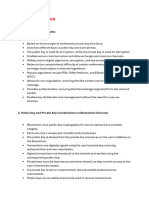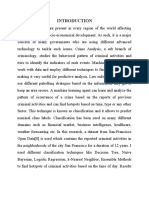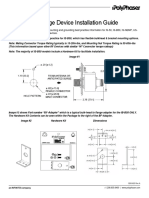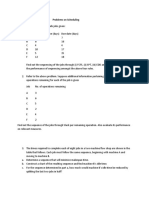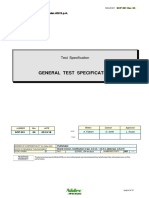0% found this document useful (0 votes)
55 views6 pagesDecentralization Application For Secure Message
This document outlines the steps to develop a decentralized application for secure messaging using blockchain technology. It discusses:
1) Storing transactions in blocks and chaining blocks together using hashes to create an immutable record.
2) Creating an API for submitting transactions, retrieving the blockchain, and initiating mining.
3) Establishing consensus across nodes by agreeing on the longest valid blockchain and announcing newly mined blocks.
Uploaded by
MTS TechnologiesCopyright
© © All Rights Reserved
We take content rights seriously. If you suspect this is your content, claim it here.
Available Formats
Download as DOCX, PDF, TXT or read online on Scribd
0% found this document useful (0 votes)
55 views6 pagesDecentralization Application For Secure Message
This document outlines the steps to develop a decentralized application for secure messaging using blockchain technology. It discusses:
1) Storing transactions in blocks and chaining blocks together using hashes to create an immutable record.
2) Creating an API for submitting transactions, retrieving the blockchain, and initiating mining.
3) Establishing consensus across nodes by agreeing on the longest valid blockchain and announcing newly mined blocks.
Uploaded by
MTS TechnologiesCopyright
© © All Rights Reserved
We take content rights seriously. If you suspect this is your content, claim it here.
Available Formats
Download as DOCX, PDF, TXT or read online on Scribd
/ 6




















